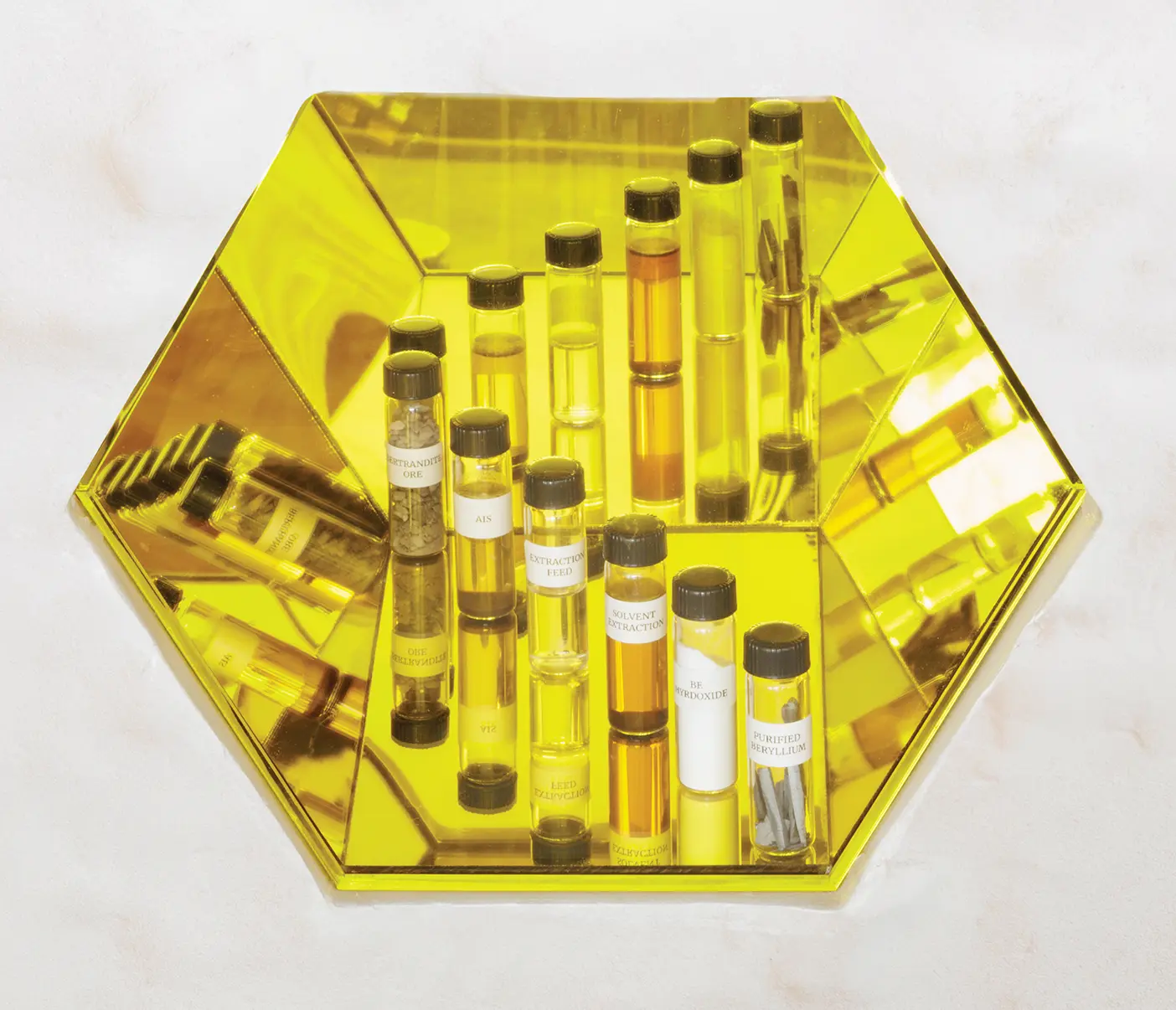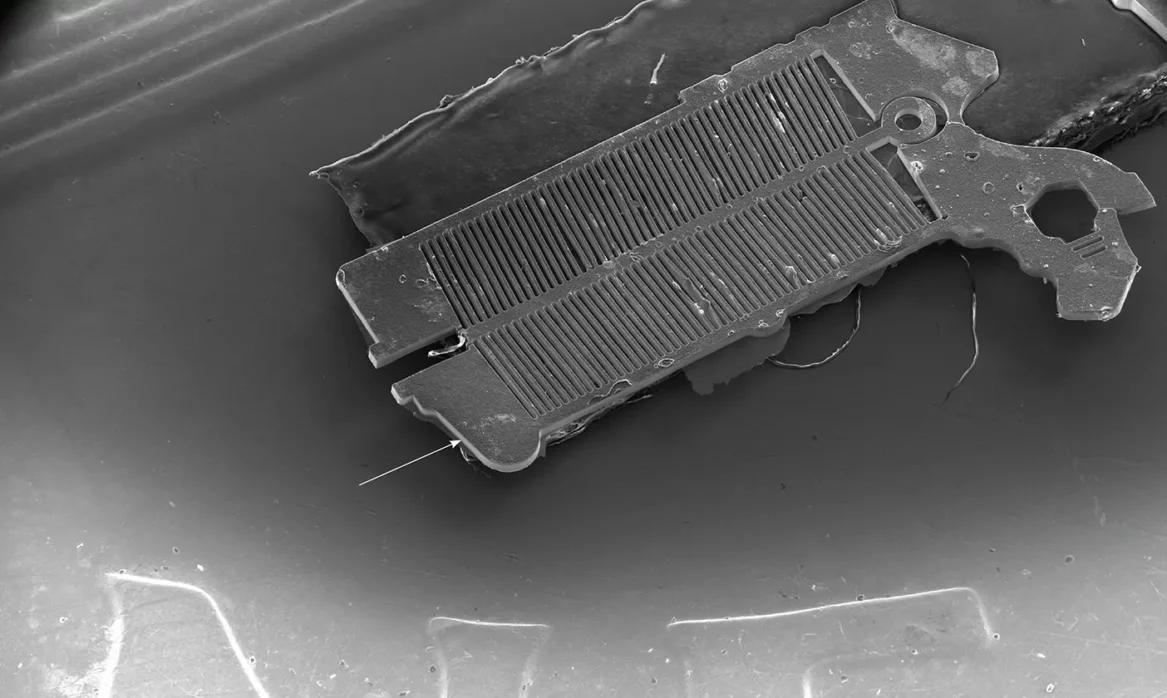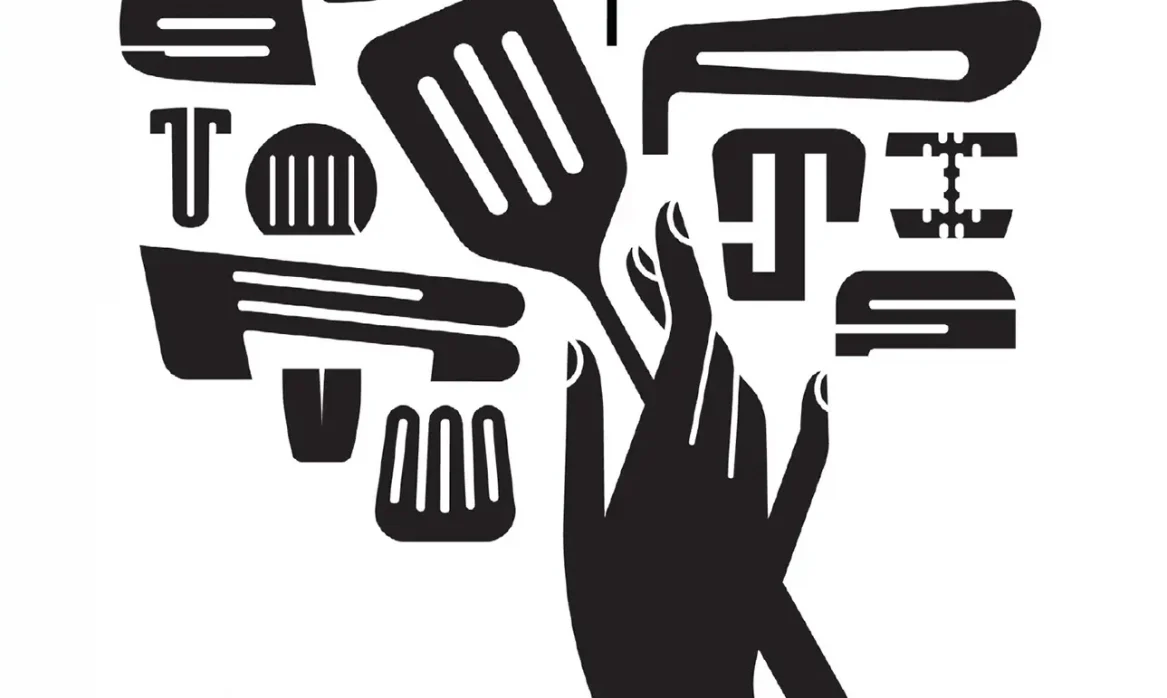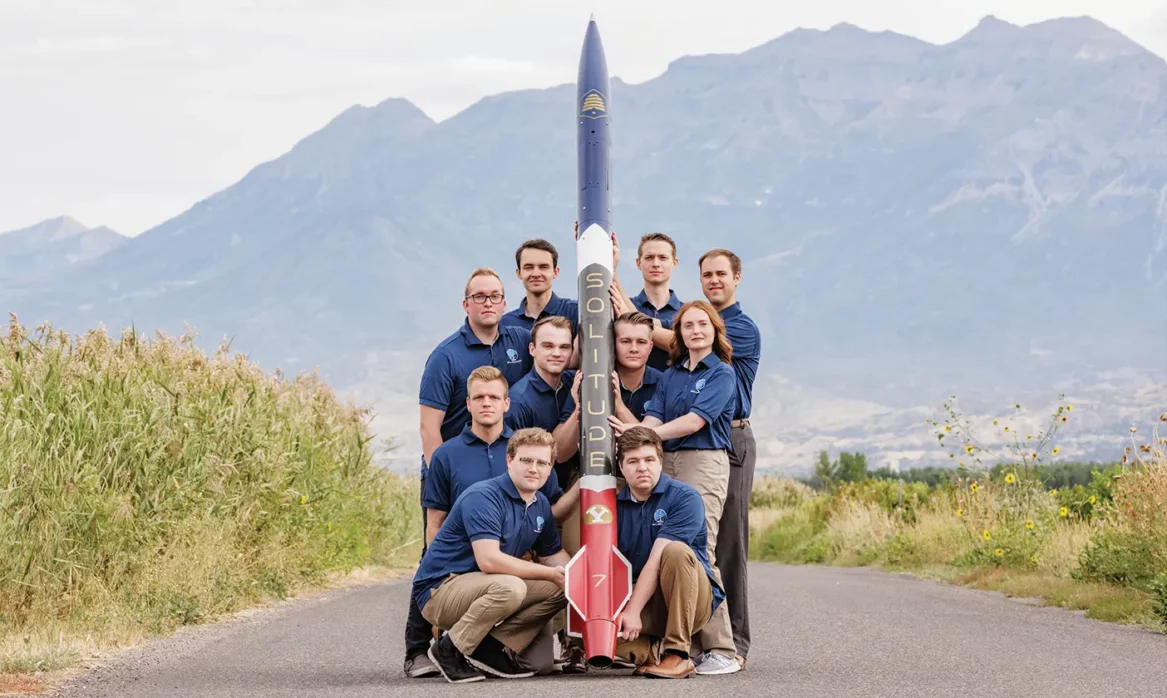What do Utah dirt and rocks have to do with stars, nebulae, and exoplanets? A stellar new display in the second-floor atrium of the Eyring Science Center tells the story of how a Utah-mined element, beryllium, ended up in the James Webb Space Telescope (JWST), which is capturing images of deep space. Simply, the telescope’s engineers fashioned its gold-plated, hexagon-shaped mirrors from beryllium mined in Spor Mountain, just 130 miles from BYU.
The 19-foot-long installation was a collaboration between the geology department and digital 3D art students. Beryllium’s forms—dirt, mineral, metal, mirror—sit in 12 hexagonal displays inside a massive topographical replica of Spor Mountain’s landscape. The final design links far-flung concepts: art and science, earth and space, the ancient past and the future of space exploration. Art student Brenna Cochran Cooper (BFA ’24) says that “exciting things happen when you combine two different lenses to look at one thing.”

12 hexagonal
displays in the new installation represent both the shape of the JWST mirrors and beryllium’s hexagon-shaped molecular structure.
21 million years
The time it took for beryllium to accumulate in Spor Mountain. The element is separated by water slowly seeping through compacted volcanic ash, called tuff.
6
The number of steps in pure beryllium metal’s refining process. It starts with dirt taken from Spor Mountain, also known as bertrandite ore (shown above), and ends with the metal used in the mirrors of the JWST.












